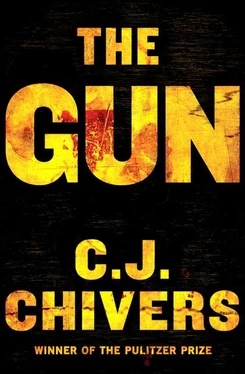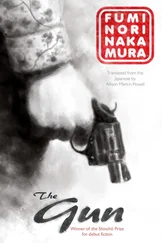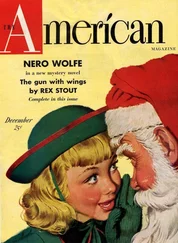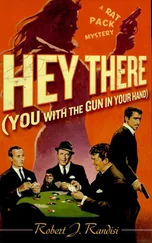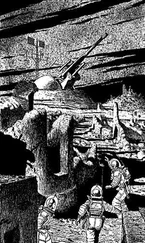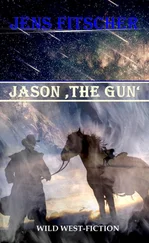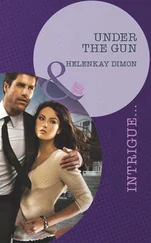And then the Gatling made its British field debut. Troubles broke out on the Gold Coast of West Africa in the 1870s, when the Ashanti, a tribe with ambitions of restoring control of a seaport to keep open trade routes, besieged a British garrison at Elmina, a slave port established by the Portuguese in what is now Ghana. The British had only recently purchased the territory from the Dutch. The fort at Elmina held. But the region remained restive and the English forces present were too thin to do more than defend what they held. Major General Garnet J. Wolseley was appointed commander of the King’s West African Army, and tasked with putting the new protectorate into order and quelling the Ashanti threat. He arrived with his forces in January 1873 and quickly moved columns inland, skirmishing as he went and establishing a forward outpost at the River Prah. The incursion alarmed the Ashanti king, who wanted to know the invaders’ intentions. He sent a messenger to find out. The British built on the example of the editor of the New York Times, and decided to show their hardware. After all, a Gatling gun was intimidating. Especially when fired.
Two days after the arrival of Sir Garnet, an ambassador came down from the king with a letter, inquiring indignantly why the English had attacked the Ashanti troops, and why they had advanced to the Prah. An opportunity was taken to impress him with the nature of English arms. A Gatling gun was placed on the river bank, and its fire directed upon the surface, and the fountain of water which rose as the steady stream of bullets struck its surface astonished, and evidently filled with awe, the Ashanti ambassador. 22
The shooting into the River Prah marked the first recorded use of a machine gun in colonial service. It was a simple demonstration of power, a performance not much different from what Gatling and his salesmen had been putting on since his early efforts on Indiana’s statehouse square. Initially it did nothing to change the Ashanti ambassador’s mind. But an artillery captain present with General Wolseley recorded another result. The emissary and the detachment of Ashanti scouts that accompanied him were given quarters in the camp. Not long after the exhibition, the sound of a gunshot woke the encampment at 1:00 A.M. Rushing to the source of the noise, the British soldiers found that one of the Ashanti scouts had placed the muzzle of his own weapon against his throat, pushed his toe against the trigger, and fired the weapon into his head. The Gatling, the captain wrote, had made an impression after all.
It was a strange and ghastly sight, the dead man lying on the guard bed with his brains scattered on the side wall, shown by the lantern light. At first the other messengers expressed ignorance as to the cause of the act, but a court of inquiry was held on the 5th and witnesses were examined. One of the Ashantis then said that the dead man, Quamina Owoosoo by name, had expressed his opinion that all the scouts were going to be killed, and only the messenger allowed to return, and had consequently blown out his brains. Sein Quaku, the messenger, spoke to the same effect, and it appeared that they had all been more or less surprised and astonished at the firing of the Gatling; and that this man, being of rather a cowardly nature, had determined to destroy himself. 23
The demonstration firing into the River Prah was only a foretaste of what the weapons could do to a technologically unsophisticated foe. It fell a few months later to Russia, which had pushed the guns ordered by Colonel Gorloff out into soldiers’ hands, to show what could happen when machine guns were fired at men.
In 1873, Czar Alexander II was expanding his empire’s authority over the khanates of Central Asia, trying to bring the defiant hinterlands and overland trade routes under Russian control. His soldiers faced a holdout at the city of Khiva on the banks of the Amu Darya, where the ruling khan, Muhammed Rahim, refused to recognize Russian rule. The khan held a small collection of Russian slaves, which provided the court in Saint Petersburg with all the public-relations material it needed to portray its campaign as a civilizing mission. Columns of imperial troops advanced across the desert toward the city, battling snowstorms in the spring and later parching heat. The khan was defended in part by the Yomud tribe, a group of Turkmen warriors whose horsemen had earned a fierce reputation by defeating Persian troops in battle. Viewed by the Russians as Islamic fanatics, they were the local manifestation of steppe warriors that had preceded Genghis Khan: able riders, brave and bearded, and at home on terrain that taxed the Russians foot soldiers’ enthusiasm for warfighting on the enemy’s land. They were not modernized in any military sense.
One afternoon in mid-1873, a Yomud detachment found a Russian supply train trudging through the steppe near the ruins of Zmukshir, near Turkmenistan’s present border with Uzbekistan. The Russians formed a large square of wagons and braced for attack. A nervous night passed. At about 3:00 A.M. the Yomuds came at last. It was an eerie horse charge in the darkness, punctuated by the horsemen’s shrieks. Inside their square, the Russians had with them two of Colonel Gorloff’s Gatling guns, which had been shipped over the Caspian Sea and dragged across the Karakum desert by pack train. The guns were under the command of an officer, Captain Litvinoff. From the account he left behind, there can be no doubt that the captain had spent considerable time thinking about their use. The Yomuds’ shrieks, meant to be unnerving, only helped him to perfect his detachment’s response. If any one moment marked the battlefield arrival of machine guns, this might have been it.
At the first howls of the enemy, I hastened to form a cover for my guns. I put on the right wing 10 privates, on the left 15 sharpshooters and 12 men of my battery command, with whom I could dispense for the present. These men were also armed with rifles. Leaving thus with the battery guns only the most indispensable men to assist in the firing, I took myself the crank-handle of the first gun, and invited Captain Cachourin to take the handle of the other gun, and enjoined on all my group not to commence the fire before the word of command was given. The guns formed an obtuse angle with each other, as it was necessary to direct them to the precise spot where the shoutings of the enemy were heard, and whence they were approaching us. We had not long to wait. The cries of the Turcomans who had succeeded in breaking through the lines of our detachment and turning their flanks suddenly rose from all sides, and became deafening. Though it was dark we perceived in front of us the galloping masses of the enemy, with uplifted glittering swords. When they approached within about twenty paces, I shouted the command “Fire.” This was followed by a salvo of all the men forming the cover, and a continuous rattle of the two battery guns. In this roar the cries of the enemy at once became weak and then ceased altogether, vanishing as rapidly as they rose. The firing at once stopped, and, as no enemy was visible, I ventured to get a look at the surrounding ground, availing myself of the first light of dawn. At some distance to the right of our square stood the 8th Battalion of the line. Between it and us, at every step, lay prostrated the dead bodies of the Yonoods [Yomuds]. 24
The newest Gatling guns, meanwhile, were being put to military tests that showed they were capable of feats beyond anything Gatling had conceived for them. On the morning of October 23, 1873, at Fort Madison, Maryland, ten drums of 400 cartridges were fired through a Gatling gun in twelve minutes and twenty-eight seconds. In the afternoon of the same day, another 28,000 rounds were fired at a similar rate. Cartridges were expensive, and Gatling, who worried over costs, had never subjected his guns to such extreme use. So many rounds were fired without rest that the barrels emanated a heat “sufficient to scorch dry white pine.” 25The gun performed nearly flawlessly. The following morning, after the gun had been cleaned, 63,600 more cartridges were fired in less than four hours without so much as cleaning the barrels. Gatling was on hand, and was astounded. On the night of October 26, complaining of a severe headache from the racket of firing, he penned an excited letter to General Love. His meticulous handwriting had abandoned him; he smeared ink repeatedly on the page. The trials, he wrote, “have been a great success.” The 100,000 cartridges had been fired almost without a problem, and only a few—one out of every four of five thousand, he said—had missed fire. “I never expected the gun to be able to produce such results,” he wrote. The officers who had come to watch had departed pleased. It was a triumph. “I can say of a truth,” he wrote. “No trials ever made with the gun before, or will, be equal in value to us.” 26
Читать дальше
